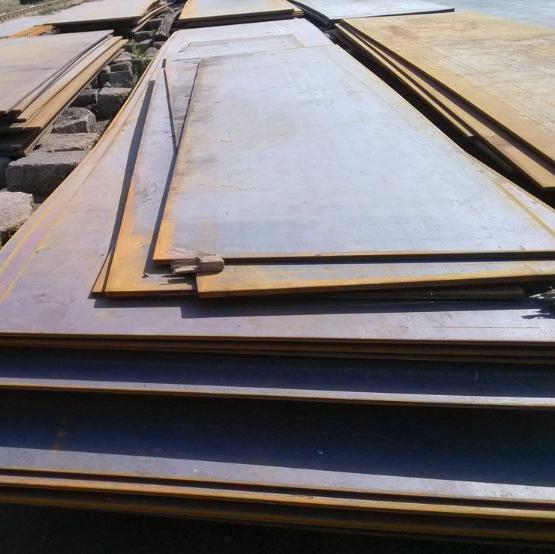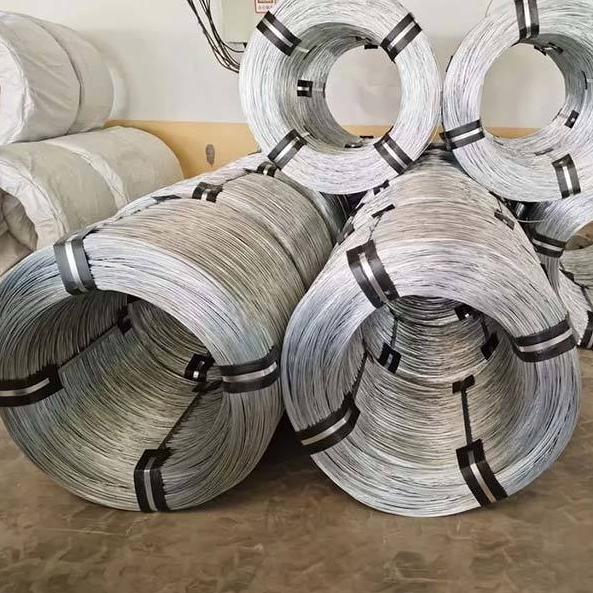AR450 / AR450F to be an excellent mid-hardness wear plate for heavy-duty equipment where a balance of abrasion resistance, ductility and formability is required; for 2025 market procurement we recommend budgeting approximately US$550–900 per metric ton from Chinese mills (FOB), US$900–1,600/ton delivered in North America for typical plate sizes, with actual prices driven by thickness, dimensions, quantity, and processing (cutting, testing, certificates). For formable AR450F (the “F” variant) expect a modest premium for through-hardening and guaranteed impact properties.
What we mean by AR450 and AR450F
When we say AR450 we mean a quenched & tempered, through-hardened abrasion-resistant steel plate whose nominal surface hardness sits around ~430–480 HBW (Brinell). The grade is supplied by many mills under generic AR labels or under proprietary trade names (Hardox® 450, NM450, JFE EH450, etc.). AR450F is the formable variant: it is processed to deliver the AR450 hardness band while retaining improved bendability and weldability — useful when plate will be formed or cold-worked.
Quick technical snapshot
-
Brinell hardness (typical): 430–480 HBW (often specified as 450 nominal).
-
Tensile / yield: depends on mill and chemistry; many AR450/NM450 products target high tensile and yield (typical tensile in datasheets can exceed 900–1,400 MPa depending on spec).
-
Chemistry: low-to-medium carbon with alloying additions (Mn, Cr, sometimes Ni/Mo/B). Exact composition varies by supplier.
-
Heat treatment: quenched & tempered through thickness to ensure wear-resistant surface and a tough core.
-
Forms available: plates (hot-rolled), sheets, cut-to-size blanks; thickness ranges commonly from a few mm up to >100 mm for heavy applications.
How AR450 is made — metallurgy & heat treatment
We summarize the usual mill route: composition is adjusted (C, Mn, Cr, microalloying) → hot roll to gauge → controlled cooling + quenching → tempering to reach target hardness and toughness through thickness. Because abrasion resistance correlates strongly with surface hardness, mills use processes to ensure through-hardness rather than just surface hardening so that the plate does not spall under impact. Different mills tune chemistry and thermal cycles to trade off hardness vs. toughness; this is why certified mill test reports (MTRs) are essential.

AR450 vs AR400 / AR500 and commercial equivalents
-
AR400: lower hardness band (typically 360–440 HBW). Easier to form and weld.
-
AR450: middle ground—more wear life than AR400, better formability than AR500.
-
AR500: higher hardness (460–544 HBW) and typically used when maximum wear resistance is critical; less formable and more likely to be brittle at thin gauges or after heavy cold work.
Commercial equivalents: SSAB Hardox 450 (trade name), JFE EH450 / EVERHARD-C450, NM450 (China/Japanese equivalents). These are often sold with proprietary guaranteed properties — for some critical applications buying a branded plate (Hardox, JFE) can be justified despite a premium.
Mechanical behaviour: toughness, impact & formability
We always review BHN, but BHN alone doesn’t tell the whole story. For equipment that receives impact (rock, frozen material), toughness and impact energy at temperature matter. AR450F varieties are specified with guaranteed impact energy or cold-temperature performance when required. For bending or press-forming, AR450F reduces the risk of cracking. When in doubt, ask suppliers for bend test, impact test (Charpy), and hardness mapping across the plate.
Welding, cutting and fabrication notes
-
Welding: use low-hydrogen consumables and preheat recommendations from the mill; welding AR steels may locally soften the HAZ, so post-weld heat treatment is sometimes considered for critical parts.
-
Cutting: plasma, laser and oxy-fuel are all possible — for high-hardness grades select cutting parameters that avoid excessive heat-affected zones which can alter surface hardness.
-
Forming: AR450F is designed to improve bendability; for large bends plan cold bending radii according to mill datasheet. Always run a trial piece before full production.
Typical applications
AR450 and AR450F are used in:
-
Mining bucket liners, crusher liners, chute liners.
-
Earthmoving equipment (cutting edges, grader blades).
-
Dump bodies, crushers and screens in quarries.
-
Agricultural and material handling applications (augers, feed hoppers).
Example: In a quarry haul-truck liner application we reduced down-time by switching from AR400 to AR450 and decreasing liner thickness by one size while keeping wear life similar — delivering weight savings and fuel cost benefits over the truck fleet’s life.
Standards, testing & certificates to request
Always request a full Mill Test Report (MTR) showing: chemical composition, heat treatment, hardness test results across plate, tensile/yield, and any impact tests. Brinell testing methodology follows ASTM E10 (Brinell hardness testing) and many vendors reference that in their acceptance tests. Commercial grades like Hardox come with manufacturer datasheets and traceability documents.
Price drivers — what actually moves the number
Key cost drivers we use when pricing or negotiating:
-
Thickness / plate size: heavy, large plates cost more per unit but often less per kg for processing.
-
Quantity: MOQ, batch buy discounts and container loading efficiency.
-
Mill or brand: branded Hardox / JFE typically carry a premium.
-
Processing: cutting, CNC profiling, edge-prep, heat-treatment additional charges.
-
Testing & certificates: extra cost for Charpy tests, hardness mapping, third-party inspection.
-
Logistics and trade costs: freight, inland haul, import duties, local taxes. Market commodity drivers (iron ore, scrap, energy) also matter — see general steel price behavior discussion.
2025 global price comparison
How we built the table: we surveyed manufacturer and marketplace price cues (Asian exporters, commodity sites, and North American distributors) and normalized to approximate US dollars per metric ton (MT) for common plate thicknesses (6–25 mm range used broadly). These are approximate market guidance ranges (FOB mill for China; delivered for other regions). Prices fluctuate by day — use them as negotiation starting points.
| Region / Channel | Typical 2025 price range (US$/metric ton) | Notes |
|---|---|---|
| China (mainland mills, FOB Tianjin/Shanghai) | US$550 – US$900 / MT | Low end often bulk factory deals; many listings on B2B platforms show $520–800/ton. |
| India (domestic mills / exporters) | US$600 – US$950 / MT | Local mills quote similar bands; import parity and duty affect export pricing. |
| USA (distributors, small orders, delivered) | US$900 – US$1,600 / MT | Higher service center margins, cutting and local logistical costs increase delivered price. Example retail sheet prices convert to high per-ton equivalents for small purchases. |
| Europe (Branded Hardox or local mills) | US$1,000 – US$1,800 / MT | Branded plates (SSAB) command a premium; EU production costs higher. |
| Australia / Oceania | US$1,000 – US$1,700 / MT | Depend on shipping from Asia or local branded supply; strong mining demand can push prices upward. |
Important caveats: these ranges are aggregate. A single 4×8 sheet sold at retail has a much higher per-ton effective price because of cutting, inventory and retail markups; containerized export orders (20–40 ft) get better unit economics. Always confirm whether price is per ton, per piece, FOB, FCA, or DDP.
Procurement checklist
We use a simple pre-purchase checklist:
-
Confirm exact grade and MTRs.
-
Get hardness maps across plate (surface + midthickness).
-
Check required certifications and testing (Charpy, bend test if forming).
-
Compare quotes on same incoterm and delivery.
-
Calculate installed lifecycle cost, not only plate price.
-
Request sample piece or short run before full order for critical parts.
Frequently Asked Questions
Q1. Is AR450F the same as AR450?
Short answer: AR450F targets the same BHN band but is produced/tuned for improved formability and weldability. Ask for the “F” variant datasheet and any extra bend/impact tests. CMC
Q2. Can we weld AR450 plate directly to mild steel?
Yes, but preheat and consumable selection matter. The weld HAZ will be softer; for critical parts coordinate weld procedures with the mill and perform trials.
Q3. How many tons should I order to get competitive Chinese FOB pricing?
Bulk orders (tens to hundreds of tons) reduce per-ton price due to economies of scale; many Chinese mills show tiered pricing where 50+ MT and 500+ MT brackets improve unit cost. Small single-ton orders are priced higher per unit.
Q4. Is branded Hardox 450 worth the extra cost?
If you need guaranteed, globally-backed certifications, narrow tolerances, or long-term supply consistency, branded Hardox or equivalent can justify a premium. For commodity, price-sensitive parts, generic AR450 with solid MTRs may be fine.
Q5. How do we compare AR450 vs AR500 for our crusher liners?
Choose AR500 if maximum wear life is required and forming is minimal; choose AR450/AR450F if you need a balance of wear resistance and toughness/formability. Also run lifecycle cost modeling — sometimes a slightly thicker AR450 gives similar longevity to AR500 with lower failure risk.








